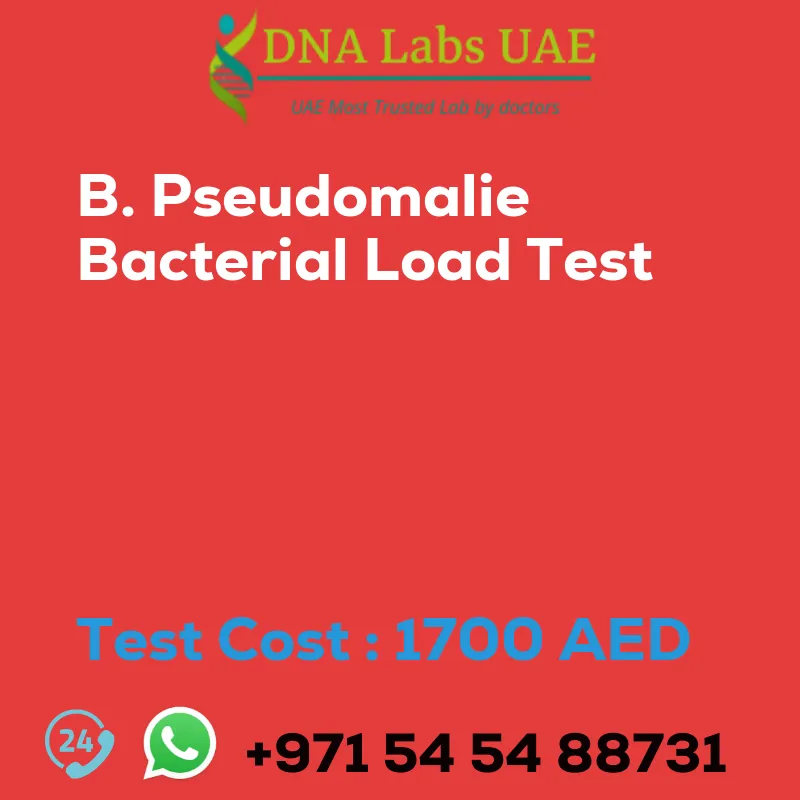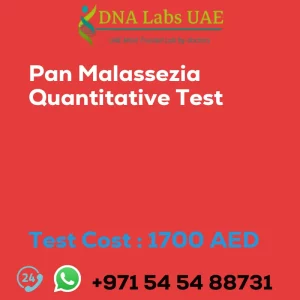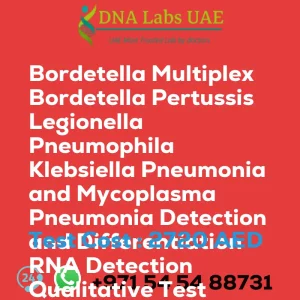B. Pseudomalie Bacterial Load Test – Cost AED: 1700.0
Symptoms, Diagnosis, and Test Details
The B. Pseudomalie Bacterial Load Test is a diagnostic test used to measure the amount of Pseudomonas bacteria present in a sample. Pseudomonas is a type of bacteria that can cause infections in various parts of the body, including the lungs, urinary tract, and bloodstream.
The test involves taking a sample from the site of infection, such as a wound or sputum sample, and culturing it in a laboratory. The bacteria in the sample are then counted and quantified to determine the bacterial load.
This test is particularly useful in monitoring the progression of Pseudomonas infections and evaluating the effectiveness of treatment. A high bacterial load may indicate a more severe infection or resistance to antibiotics, while a decreasing bacterial load may indicate that the treatment is working.
The Pseudomalie Bacterial Load Test can help healthcare providers make informed decisions about treatment options, such as adjusting antibiotic therapy or considering alternative treatments. It can also be used to assess the risk of spreading the infection to others, especially in healthcare settings.
Overall, the Pseudomalie Bacterial Load Test is a valuable tool in managing Pseudomonas infections and ensuring appropriate treatment is provided to patients.
Test Information
- Test Name: B. Pseudomalie Bacterial Load Test
- Components: Serum, plasma, whole blood
- Price: 1700.0 AED
- Report Delivery: 3rd Working Day Email: 36 hours. On phone: 24 hours
- Method: Real Time PCR
- Test Type: Viral
- Doctor: Physician
- Test Department: Genetics
- Pre Test Information: Need to sign Consent document and bring any clinical history of patient for B. Pseudomalie Bacterial Load Test
| Test Name | B. Pseudomalie Bacterial Load Test |
|---|---|
| Components | |
| Price | 1700.0 AED |
| Sample Condition | Serum, plasma, whole blood |
| Report Delivery | 3rd Working Day Email:-36 hours. On phone: 24 hours |
| Method | Real Time PCR |
| Test type | Viral |
| Doctor | Physician |
| Test Department: | Genetics |
| Pre Test Information | Need to sign Consent document and bring any clinical history of patient forB.Pseudomalie Bacterial LoadTest |
| Test Details |
The Pseudomalie Bacterial Load Test is a diagnostic test used to measure the amount of Pseudomonas bacteria present in a sample. Pseudomonas is a type of bacteria that can cause infections in various parts of the body, including the lungs, urinary tract, and bloodstream. The test involves taking a sample from the site of infection, such as a wound or sputum sample, and culturing it in a laboratory. The bacteria in the sample are then counted and quantified to determine the bacterial load. This test is particularly useful in monitoring the progression of Pseudomonas infections and evaluating the effectiveness of treatment. A high bacterial load may indicate a more severe infection or resistance to antibiotics, while a decreasing bacterial load may indicate that the treatment is working. The Pseudomalie Bacterial Load Test can help healthcare providers make informed decisions about treatment options, such as adjusting antibiotic therapy or considering alternative treatments. It can also be used to assess the risk of spreading the infection to others, especially in healthcare settings. Overall, the Pseudomalie Bacterial Load Test is a valuable tool in managing Pseudomonas infections and ensuring appropriate treatment is provided to patients. |







